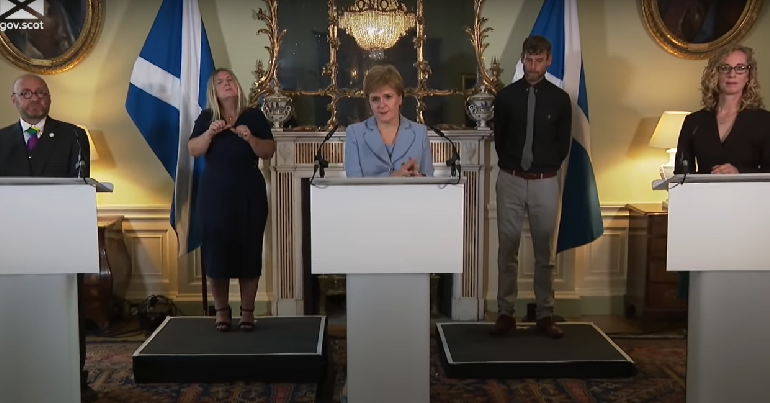Dodgy climate accounting rules pose a real threat to our forests

Global forests play a huge role as a carbon sink. At the same time, how we manage (or mismanage) forests and land has a major impact on the climate – around one third of CO2 emissions between 1750 to 2011 came from changes in land use and forest cover. [1] Negotiating an international deal to address deforestation has been basically impossible for decades; climate change has added urgency to the task. But that isn’t stopping corrupt officials and vested interests throwing their spanners in the works.
After the Paris Agreement, forest management can contribute to each nations’ overall mitigation commitments, within the land use, land use change and forestry (LULUCF) sector.
On June 22nd, the European Parliament will finalise a decision on how GHG emissions are accounted for within the EU’s Paris Agreement commitments.
Several players in the debate are desperately attempting to water down the accounting rules, which would make it easier for industry (e.g. intensive forestry for biomass energy) to hide their true impact on the climate.
This is doubly problematic as emissions can be offset between activities within LULUCF and in other sectors – so if a dodgy baseline makes it appear that forests have sequestered more CO2 than they actually have, this can then justify putting off meaningful emission reductions elsewhere. [2]
The worrying flaws in the proposed LULUCF accounting rules
Regarding LULUCF, one main argument is about the baseline used to measure how changing land and forest management affects emissions.
There are three options on the table
- The best proposal is to establish a baseline reference period, from 1990 – 2009. This is termed ‘net-net’ accounting.
- Opponents to this want to extend the reference period to cover 1990-2012. This is a problem, because the EU’s Renewable Energy Directive came into force in 2009. This incentivised biomass energy, resulting in a big increase in harvesting and burning after 2009. Therefore, extending the baseline reference period to 2012 would make any C emissions from forestry now appear smaller, and any C removals from the atmosphere appear larger than they really are.
- Saving the worst till last, the final option is to adopt a ‘gross-net’ accounting system. This approach doesn’t take any reference baseline into consideration, reporting is just done on a year-by-year basis with no comparison to historical emissions levels. Nations can provide future projections of emissions. This is complicated and open to fudging, as there are big incentives to exaggerate avoided emissions to gain carbon credits.
Why using forests to offset emissions from other sectors is a big mistake
The second major issue surrounds the Emissions Sharing Regulation. This allows removals from the LULUCF sector to be used as carbon credits to compensate for emissions in sectors not covered by the EU’s Emissions Trading Scheme (ETS). These non-ETS sectors are responsible for almost 60% of the EU’s emissions, and include transportation, agriculture, waste and buildings.
If these rules are included in the LULUCF regulation on June 22nd, it will mean that the C sequestration capacities of forests can be used to avoid making meaningful cuts in other areas of society. To meet the 1.5C target set out in the Paris Agreement, we need emissions to peak in the next few years, and from there move towards net negative emissions within just a few decades. [3] This means making radical cuts across all sectors, while simultaneously maximising the C storage capacities of forests and other land. Instead the EU forecasts a more than 30% reduction of C stored in European forests by 2030, largely due to pressure from biomass energy and urban sprawl.
Correctly accounting for the C emissions and removals would incentivise climate friendly forest management – rather than encouraging burning forests for biomass.
Allowing these offsetting loopholes would be a step in entirely the wrong direction.
What can I do about it?
In the (possibly deliberately) complicated world of C accounting, your voice is especially important! Contact these MEPs to encourage them to take an interest in this debate and to vote in favour of net-net accounting for forests and to close the loophole that uses forests to offset emissions in other sectors.
Feel free to use the template email below:
Dear XXXX MEP
I am writing to you concerning the land use, land use change and forestry (LULUCF) vote, scheduled for the 22nd of June at the European Parliament.
Emissions accounting within LULUCF at present are desperately flawed for forestry, this is incompatible with the urgent efforts we need to make to tackle climate change.
By using a future or ‘projected’ reference level for managed forest land (Article 8), and using gross-net accounting for afforestation and deforestation (Article 6), the true C emissions resulting from forest management are easily hidden.
Instead, I urge you to use your influence as a member of the ENVI committee to push for a net-net approach to forest C accounting, based on a historical reference period from 1990 to 2009.
Secondly, the proposed allowance for LULUCF reductions to offset non-ETS emissions should be scrapped. This loophole would result in millions of tonnes of additional atmospheric CO2, and will weaken efforts to make meaningful cuts to overall emissions.
We in Europe should set a global precedent with our climate change mitigation efforts. This should include ambitious targets for the whole LULUCF sector including forest management, moving beyond no-debit, and towards achieving negative emissions.
I urge you to use your vote on the 22nd of June to push for net-net accounting and an end to using LULUCF reductions to offset non-ETS sector emissions.
Kind regards,
MY NAME
And here is a list of MEPs and their contact details:
|
Name |
Party |
|
|
Ms Bearder |
Liberal Democrat |
catherine@bearder.eu |
|
Ms Reid |
UK Independence Party |
julia.reid@ukip.org |
|
Ms James |
UK Independence Party |
diane.james@waverley.gov.uk |
|
Ms Foster |
Conservative |
office@jacquelinefostermep.com |
|
Mr Nicholson |
Ulster Unionist Party |
jim.nicholson@uup.org |
|
Mr Duncan |
Conservative |
[resigned as an MEP since article publication] |
|
Ms Girling |
Conservative |
linda@juliegirling.com |
|
Ms Swinburne |
Conservative |
kayswinburnemep@welshconservatives.com |
|
Mr Taylor |
Green Party |
keithoffice@greenmeps.org.uk |
|
Mr Brannen |
Labour |
info@paulbrannen.co.uk |
|
Ms Willmott |
Labour |
office@gleniswillmott.org.uk |
|
Mr Dance |
Labour |
seb@sebdance.com |
References
- IPCC 2013. Climate change 2013: the physical science basis. Intergovernmental panel on climate change, working group I contribution to the IPCC fifth assessment report (AR5). New York.
- European Commission. 2016. Available at: http://eur-lex.europa.eu/legalcontent/EN/TXT/?uri=CELEX:52016SC0249
- Rogelj, J., Luderer, G., Pietzcker, R.C., Kriegler, E., Schaeffer, M., Krey, V. and Riahi, K., 2015. Energy system transformations for limiting end-of-century warming to below 1.5C. Nature Climate Change, 5(6), pp.519-527.




Ian Duncan is no longer an MP
Thanks. Can you explain the selection of particular MEPs at the end?
They are members of the ENVI committee, dealing with environmental issues among other things. A few other committees were also involved in the vote as far as I know.